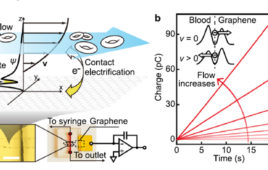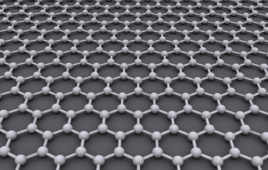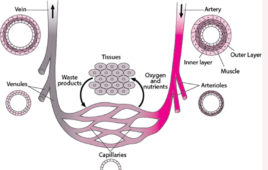People across the world are studying climate change and the effects of greenhouse gases, and that body of research is expanding with the work of student-researchers at Cornell College.
Oliver Trousdale and Samantha Slaymaker explored methods of carbon dioxide capture with Professor Craig Teague for the Cornell Summer Research Institute.
“We have ways of capturing carbon dioxide that are in use industrially, but they take a lot of energy and they have other properties, such as being corrosive,” Teague says.
“We are working on understanding different materials that could be better for capturing CO2, or more precisely, separating the carbon dioxide from some other gas, like nitrogen, that we don’t care so much about.”
Trousdale focused on the computational chemistry aspect of the research with graphene.
“Basically, we are building molecules on the computer and telling the computer to perform certain types of calculations in order to see how graphene-like structures can interact with CO2,” Trousdale says.
“Oliver was able to find something we didn’t really expect. It actually will bind CO2 stronger than we were expecting it to, so that’s pretty interesting,” Teague says.
Slaymaker worked with ionic liquids, which she described as liquid salts at room temperatures. She’s exploring the liquids with a specific instrument.
“We are using an infrared spectrometer, called the Vertex 70,” Slaymaker says. “All it does is measure the energy of the movement of molecules.”
Teague points out that the team asked the instrument to work in a way that wasn’t routine.
“There’s been a lot of work in terms of can the instrument do this and if so, how do we make it work the best way it can? How do we put these other pieces in? We are now to the point of doing some experiments that have never been done before — so, doing spectroscopy as a function of temperature for some of the materials she is working with,” Teague says.
They worked together to discover solutions to the emissions issues at the ground level.
“We are looking at how they interact at a fundamental level that will hopefully lead to further advances in carbon dioxide separation and capture,” Teague says.
Oliver and Samantha took on this research early in their college careers, as they were going into their second year at Cornell. They say the experience helped them grow.
“I have a lot more confidence in the laboratory setting,” Slaymaker says. “I know during General Chemistry, I struggled with labs just because I wasn’t confident with what I was doing. Now, I’m more familiar with the settings and the techniques.”
“It was nice that I was able to find a balance,” Trousdale says.
“This is definitely higher level than I expected, but I can still meet it as close as I can and be successful in what I’m researching.”
Source: Cornell College




